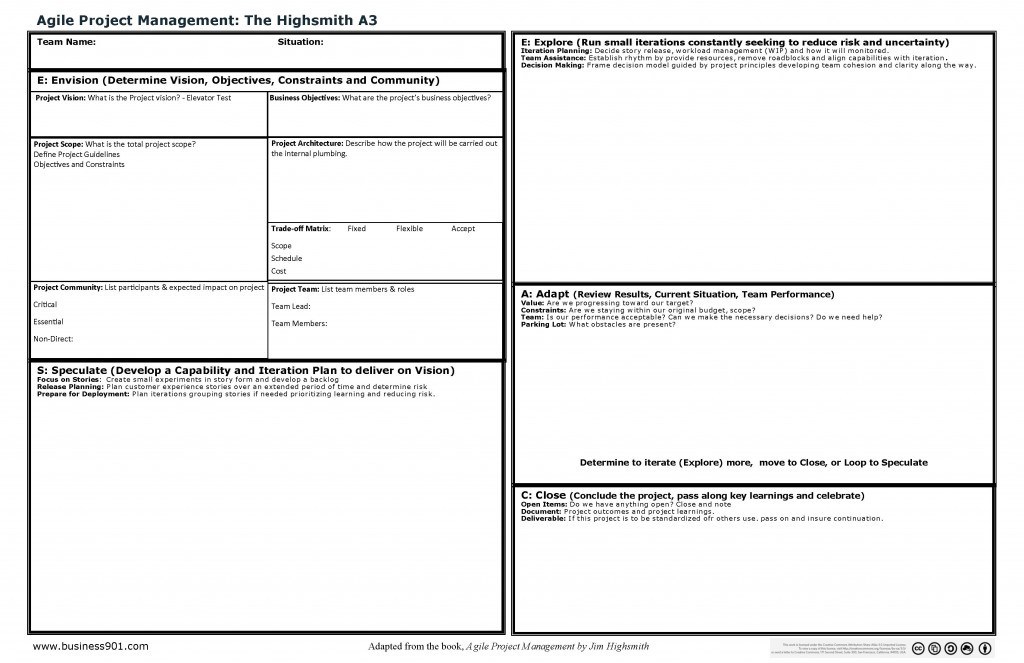One of the best books I have read and certainly the one that has influenced me the most on Agile Project Management is Jim Highsmith’s book of the same name. I have referenced his material for many years on this blog. We are not short of Project Management books and Agile books, in general, but I have found Jim’s material standing out from the rest offering a straightforward approach and with referenced material sprinkled throughout in case anyone wants to take a deeper dive in a particular area.
In this book, Jim demonstrates what iterative project management is all about. I especially like the terminology he uses moving from Plan-do, which just about always results in a linear, waterfall approach and the more traditional names of Initiate, Plan, Define, Design Build, and Test. Instead, he uses Envision, Speculate, Explore, Adapt, and Close (ESEAC). The outline is further explained below:
- Envision: Determine your marketing vision and objectives and constraints, your community, and how your team will work together.
- Speculate: develop the capability and/or feature based launch to deliver on the vision.
- Explore: plan and deliver running tested stories in the short iteration, constantly seeking to reduce risk and uncertainty.
- Adapt: review the delivered results, the current situation, and the team’s performance, and adapt as necessary.
- Close: conclude the launch, pass along key learning, and celebrate.
Highsmith uses Envision to form the structure or better yet the skeleton for the project and then the Speculate-Explore-Act (S-E-A) as an overall cycle with Explore-Act being smaller iterations within SEA till the project is Closed. You will have multiple iterations using E-A within S-E-A, and your larger iteration of S-E-A may even be adjusted as we learn more through the project. I will also add that individual E-A may close at different times and that you could even have separate S-E-A path in larger projects. The point is that there are a lot of iterations happening. If you were going to use the A3 below, I would run a few copies and cut the individual blocks apart so that I could mount them to the wall as needed. It really is not as complicated as I made it be. I will make a video of it for this weekend.
CAP-Do (More Info): What makes CAP-Do so attractive is that it assumes we do not have the answers. It allows us to create a systematic way to address the problems (pain) or opportunities (gain) from the use of our products and services.
Lean Marketing eBooks (More Info): Excerpt from the Lean Marketing House

